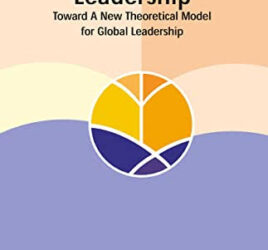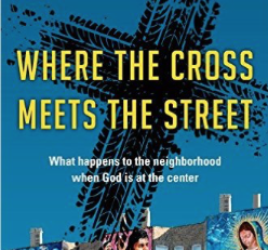In their collaborative work, Street Signs: A New Direction in Urban Ministry, authors Ray Bakke and Jon Sharpe share their personal migration story from rural roots to urban ministry.[1] Filled with lessons learned, theological reflections, and practical helps, Street Signs points towards a new way or ministering in, to and with the city. The book is divided in two, with Bakke writing the first half and Sharpe the second.
As a student of Bakke Graduate University (BGU), it was very helpful to me to learn more about the background story of Ray Bakke and the establishment of BGU. I recognize my own journey from a farming town in Holland to urban ministry in Amsterdam and now urban missions in Hanoi, Vietnam. Working in Amsterdam in 1988-1992, I was there when “Taking Our Cities For God”[2] came out and everyone was adopting cities across the globe—except the city we were already working and living in! How I wish Ray’s work had been more popularized in those days and I had read this book then.
Ray Bakke inspires me to read more, learn more, collaborate more, question more, research more, network more, facilitate more, but speak less. Typically, the first hour of a two-hour consultation Ray would spend asking questions and listening to the participants’ own insights. On behalf of the Lausanne Movement, Bakke conducted over 200 city-wide consultations around the world within 10 years. He would fly into the city before the weekend, exegete the city on the Saturday, visit as many services as possible on the Sunday, and ask questions on Monday before he would start to speak.
In the final three chapters, Jon Sharpe explains in detail the what, where and how-tos of conducting various types of city consultations. Two basic formats are presented: a 3-day city-wide consultation and a 1-day consultation. The latter can be organized as a city ministry summit, orientation for new pastors, city tour for church members, think tank for a specific issue, consultation for a particular denomination, or an academic seminar. Sharpe shares 24 assumptions, 11 objectives and 9 outcomes to consider when preparing for a consultation. The Envisioning Team, made up of a broad spectrum of passionate people, is tasked with research, networking and organizing the consultations.
Although I was already familiar with Bakke’s theology of the city and some of his story, it was Sharpe’s practical “how-to” of organizing consultations and Bakke’s posture and approach to facilitating consultations that inspired me most. Through our Love Hanoi campaign, I have been able to organize several varied gatherings with some success. Learning about additional models for 1-day events is very helpful. I intent to put some of these into practice, now able to name and describe them more clearly. I also look forward towards organizing a 3-day city-wide consultation with leaders from the various sectors of society. My goal is to accomplish this within two years, which would give me at least two more years to follow through on the outcomes. “Signs of Hope in Hanoi” has a nice ring to the name of such a consultation, thanks to Bakke and Sharpe.
By Jacob Bloemberg
[1] Raymond J. Bakke and Jon Sharpe, Street Signs : A New Direction in Urban Ministry (Birmingham, Ala.: New Hope Publishers, 2006).
[2] John Dawson, Taking Our Cities for God : How to Break Spiritual Strongholds (Lake Mary, Fla.: Creation House, 1989).




